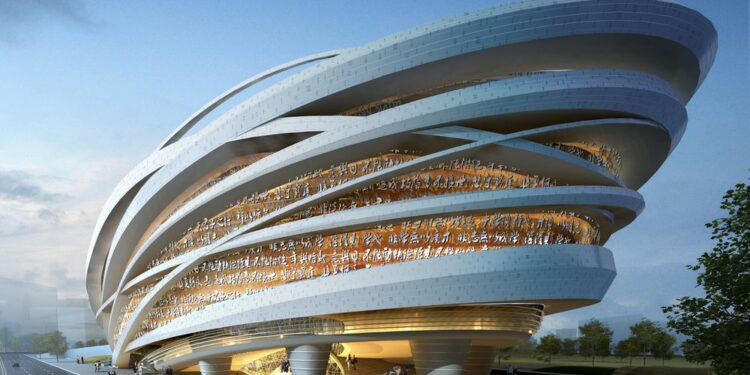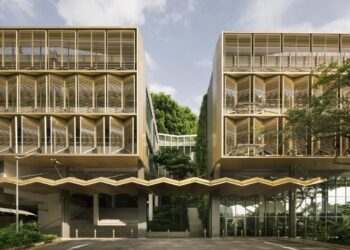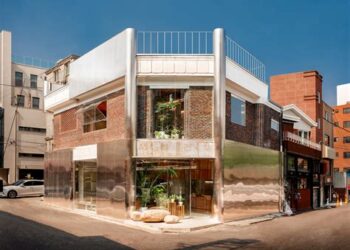In today’s rapidly evolving global landscape, contemporary architecture is no longer just about functionality or aesthetics; it is a vibrant dialogue between tradition and modernity. Cultural identity has become an essential ingredient in the architectural process, weaving historical narratives, social values, and local craftsmanship into the very fabric of buildings. This fusion not only transforms skylines but also nurtures community pride and promotes sustainable development. This article delves into the myriad ways cultural identity influences modern architecture, examines case studies from around the globe, and explores how architects incorporate local traditions into innovative designs.
Architectural practice has evolved to embrace a host of social, economic, and environmental challenges while retaining a deep connection to cultural heritage. Today, architects are expected to create structures that are both state-of-the-art and deeply rooted in the local context. This dual approach has led to an emerging trend where cultural narratives are integrated within the framework of contemporary design. The resulting buildings serve not only as places for commerce, living, and recreation but also as powerful symbols of identity and history.
While globalization promotes a universal language in design, cultural nuances continue to define the uniqueness of regions and communities. The cultural expressions in architecture can be seen in the use of indigenous materials, innovative reinterpretations of traditional motifs, and the conscious effort to reflect social customs. This article aims to provide insights into how cultural identity shapes contemporary architecture, highlighting key elements, benefits, challenges, and future directions in this dynamic field.
The Role of Cultural Identity in Modern Architecture
Contemporary architecture has shifted its focus towards creating spaces that resonate with local traditions and cultural narratives. Cultural identity plays a vital role in ensuring that new buildings and spaces reflect the heritage of their place and people. This approach contributes to the preservation of history while allowing architects to innovate and push design boundaries.
A. Incorporating Historical Narratives
Cultural identity in architecture often involves reinterpretation of historical elements. Architects may draw inspiration from indigenous art, ancient building techniques, or historical layouts of a region. This allows modern structures to carry on a legacy while fulfilling contemporary needs.
-
A. Adaptive Reuse of Historical Elements: Architects incorporate salvaged materials or design motifs from heritage buildings into new constructions.
-
B. Symbolism in Ornamentation: Use of traditional patterns and symbols helps evoke a sense of place and continuity.
-
C. Preservation of Memory: The integration of local history in design practices reinforces community memory and pride.
B. Reflecting Social Values and Beliefs
Architecture can become a medium for expressing social values and communal beliefs. In culturally diverse regions, the built environment is a canvas that communicates local customs, rituals, and societal norms.
-
A. Community-Centered Design: Public spaces and buildings are designed to encourage social interaction and collective identity.
-
B. Spiritual and Ritual Significance: Incorporating design elements that reflect local religious or spiritual beliefs contributes to the cultural fabric of a community.
-
C. Inclusive Urban Planning: The creation of spaces that cater to diverse cultural groups fosters social cohesion and mutual respect.
C. Embracing Indigenous Materials and Techniques
The choice of materials and construction techniques often mirrors the cultural heritage of a region. The use of locally sourced, sustainable materials helps bridge traditional craftsmanship with modern design.
-
A. Local Materials: Utilization of region-specific resources, such as stone, wood, or clay, emphasizes authenticity.
-
B. Traditional Techniques: Revival of ancient construction methods supports local industries and reinforces regional identity.
-
C. Sustainable Practices: Combining traditional wisdom with modern technology results in environmentally responsible architecture that respects natural surroundings.
Case Studies: Global Examples of Culturally Infused Architecture
Throughout the world, numerous projects exemplify the successful integration of cultural identity in contemporary architecture. These case studies highlight how local traditions can be reinterpreted and transformed into innovative designs that resonate with both residents and visitors alike.
A. The Guggenheim Museum, Bilbao, Spain
The Guggenheim Museum in Bilbao is an iconic example of cultural renewal through architecture. Designed by Frank Gehry, the museum’s fluid forms and innovative use of titanium cladding reference the industrial heritage of the city while setting new standards in contemporary design.
-
A. Industrial Roots: The museum’s design pays homage to Bilbao’s industrial past while revitalizing the city’s economy.
-
B. Sculptural Form: The building itself is considered a work of art that enhances the identity of the region.
-
C. Urban Regeneration: As a cultural beacon, the museum has spurred urban regeneration, drawing global attention and tourism.
B. The National Museum of African American History and Culture, Washington, D.C., USA
This museum stands as a powerful testament to the cultural experiences and historical journey of African Americans. The design incorporates symbolic elements and references to African artistic traditions, merging history with modernity.
-
A. Symbolic Facade: The exterior evokes imagery from traditional African art, creating an immediate connection to cultural history.
-
B. Narrative Spaces: The museum is organized to guide visitors through a narrative journey of struggle, resilience, and triumph.
-
C. Community Engagement: The design invites community participation and highlights the cultural contributions of African Americans to national history.
C. The Harpa Concert Hall, Reykjavik, Iceland
Harpa Concert Hall has become a landmark in Reykjavik, blending modern design with influences from Iceland’s natural landscape and cultural heritage. Its unique façade, made of geometric, crystalline panels, reflects the country’s shimmering natural phenomena.
-
A. Natural Inspiration: The design mirrors Iceland’s dramatic natural scenery, including the interplay of light and shadow.
-
B. Cultural Symbolism: The concert hall serves as a gathering space that celebrates both local culture and contemporary art.
-
C. Functional Beauty: Beyond aesthetics, Harpa’s design enhances acoustics and functionality, illustrating the integration of art and engineering.
D. The Arab World Institute, Paris, France
A striking example of cultural integration outside the region it represents, the Arab World Institute in Paris is dedicated to promoting Arab culture and history. Its innovative design by Jean Nouvel features dynamic geometric forms that reflect the complexity of Arab art and architecture.
-
A. Interactive Facade: The building’s façade comprises dynamic, rotating panels that create an engaging visual experience.
-
B. Cultural Dialogue: The institute acts as a bridge between cultures, fostering dialogue through art and architecture.
-
C. Modern Interpretation: It demonstrates how traditional geometries can be reimagined in a modern, urban context.
The Impact of Cultural Identity in Architecture
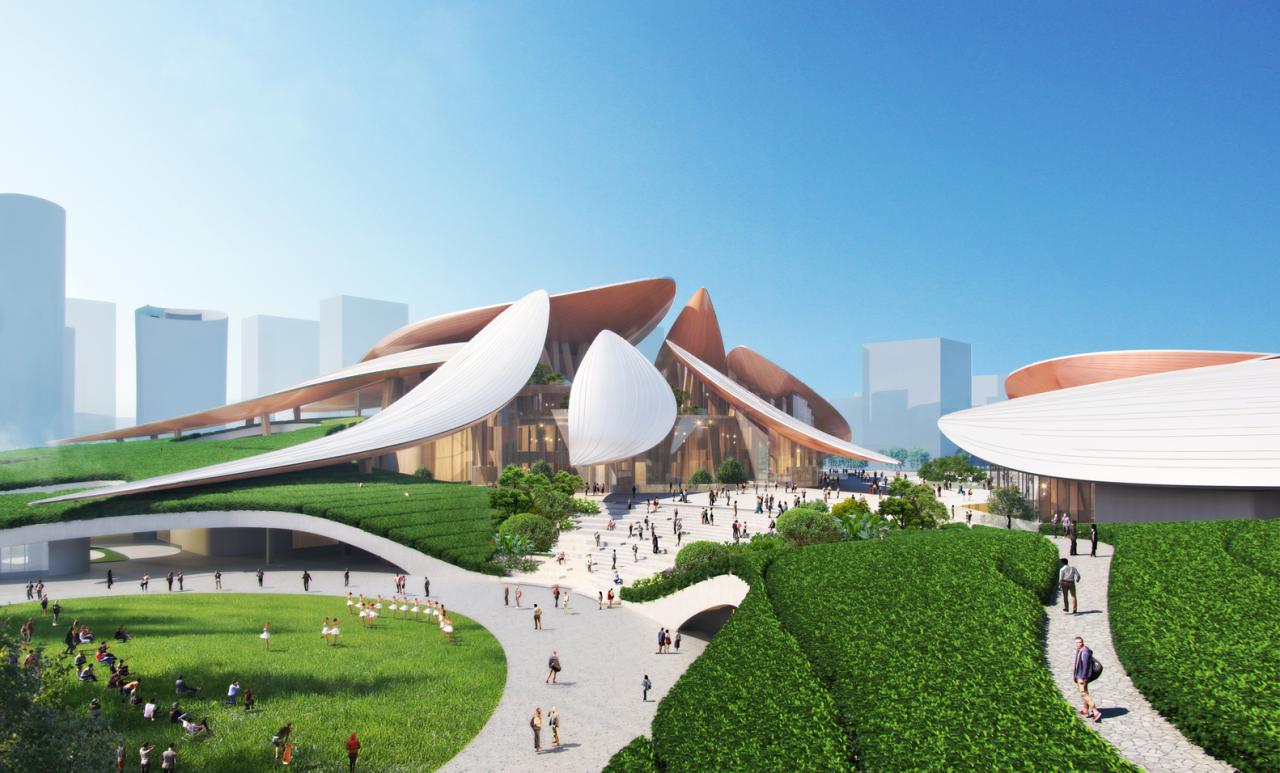
The infusion of cultural identity into contemporary architecture has far-reaching impacts, influencing communities, economies, and even environmental practices. A few key areas where this influence is most visible include community engagement, tourism, and urban development.
A. Strengthening Community Ties
Architecture that reflects cultural heritage fosters a deep sense of belonging among residents. When people see their history and values mirrored in their built environment, it reinforces local pride and identity.
-
A. Public Spaces as Cultural Hubs: Urban parks, plazas, and community centers designed with cultural references encourage residents to come together and celebrate local traditions.
-
B. Educational Value: Buildings that serve as cultural landmarks educate the public about the history and evolution of their community.
-
C. Social Cohesion: Integration of community symbols and local narratives contributes to social solidarity and a shared sense of identity.
B. Boosting Local and Global Tourism
Architectural landmarks that showcase cultural identity attract visitors from around the globe, contributing to local economies and promoting cross-cultural understanding.
-
A. Iconic Landmarks: Structures imbued with cultural heritage become symbols of their cities and serve as major tourist attractions.
-
B. Economic Growth: Increased tourism leads to job creation in hospitality, services, and retail, benefiting the local economy.
-
C. Cultural Exchange: Tourists are exposed to authentic cultural narratives, facilitating a deeper appreciation for local traditions and arts.
C. Driving Sustainable Urban Development
Sustainability is a critical consideration in modern architecture. Incorporating cultural identity often goes hand in hand with environmentally responsible practices, as local materials and traditional methods are inherently sustainable.
-
A. Eco-Friendly Materials: Many culturally rooted architectural practices rely on locally available, sustainable materials.
-
B. Energy Efficiency: Traditional designs often incorporate natural ventilation, shading, and insulation methods that are energy efficient.
-
C. Resilience: Buildings designed in harmony with their environment tend to be more resilient to natural disasters and climate change.
Challenges in Integrating Cultural Identity with Modern Design
Despite the many benefits, integrating cultural identity into contemporary architecture is not without its challenges. Architects and urban planners must navigate complex issues that range from cultural preservation to modern regulatory frameworks.
A. Balancing Tradition and Innovation
One of the primary challenges is achieving a harmonious balance between honoring traditional elements and embracing modern innovation. Architects must navigate the fine line between respectful preservation and creative reinterpretation.
-
A. Respect for Heritage: Ensuring that modern reinterpretations do not dilute or misrepresent historical and cultural significance.
-
B. Technological Integration: Incorporating state-of-the-art technology in a way that complements, rather than overwhelms, cultural narratives.
-
C. Stakeholder Engagement: Successfully merging the visions of local communities, historians, and modern designers requires extensive collaboration and dialogue.
B. Navigating Regulatory and Financial Hurdles
Projects that integrate cultural identity often face unique challenges in terms of regulation and funding. Building codes, zoning laws, and heritage preservation regulations can sometimes limit creative expression.
-
A. Approval Processes: Gaining permission for innovative designs that deviate from conventional urban standards can be time-consuming and complex.
-
B. Cost Implications: Sourcing traditional materials and employing specialized craftsmanship may drive up construction costs.
-
C. Maintenance: Ensuring that culturally significant elements are maintained over time can require additional investment and expertise.
C. Overcoming Misinterpretation and Cultural Appropriation
The use of cultural symbols in architecture must be done with sensitivity and respect. Misinterpretation or appropriation of cultural elements can lead to controversy and alienation within communities.
-
A. Authentic Representation: Engaging with local experts and community leaders is essential to ensure that cultural elements are represented truthfully and respectfully.
-
B. Continuous Dialogue: Open communication channels between designers and the community help mitigate risks of misinterpretation.
-
C. Ethical Design Practices: Incorporating ethical guidelines in the design process to honor cultural significance while innovating responsibly.
Future Trends in Culturally Influenced Contemporary Architecture
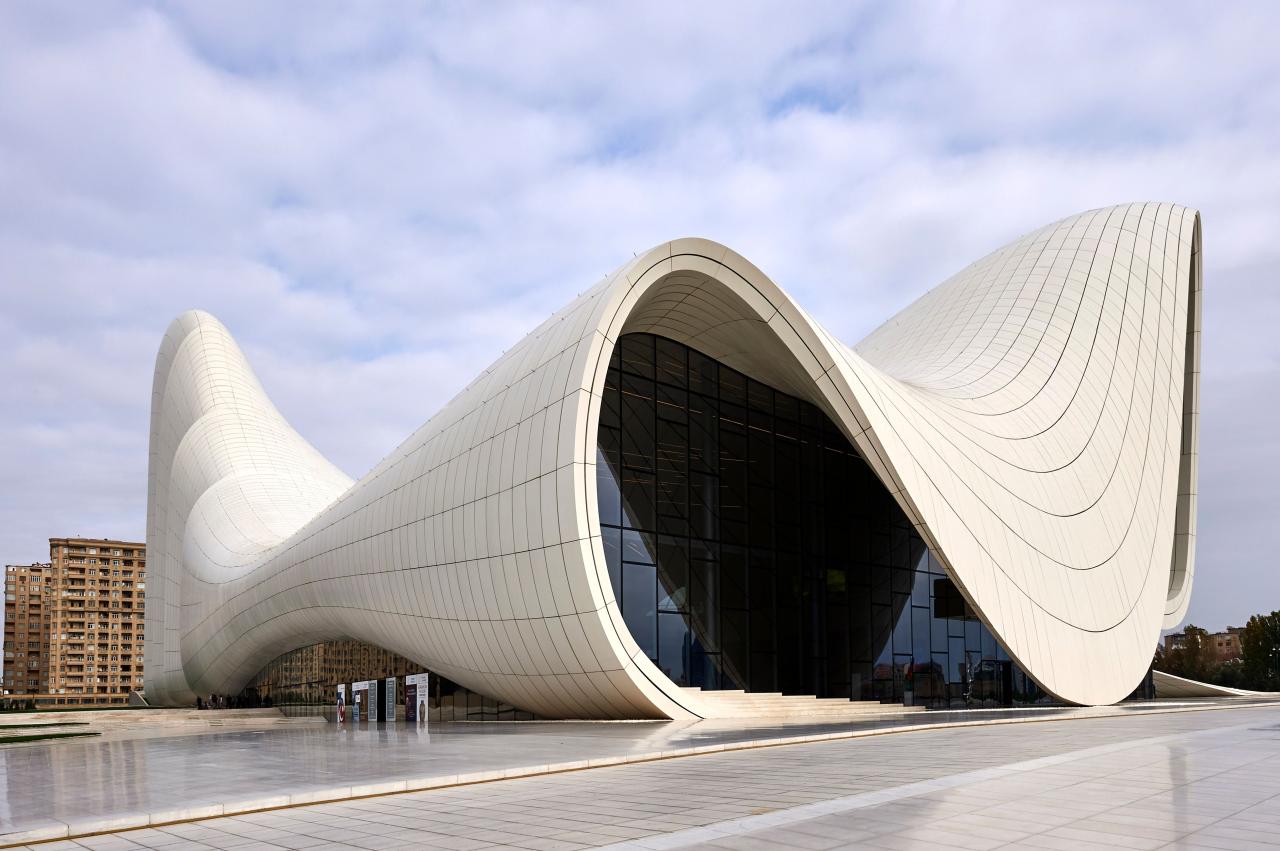
Looking ahead, the integration of cultural identity in architecture is expected to deepen, driven by emerging technologies and evolving societal values. Architects are increasingly looking to blend digital innovation with traditional practices, resulting in a future where buildings are not only smart and efficient but also deeply connected to their cultural roots.
A. Digital Tools for Cultural Preservation
Advances in digital modeling, virtual reality, and augmented reality are transforming how cultural heritage is documented and integrated into design.
-
A. Virtual Heritage Repositories: Digital archives of historical buildings and art can serve as reference points for new designs.
-
B. Augmented Design Processes: AR technology can overlay traditional patterns onto modern designs, enabling architects to experiment with cultural motifs in real time.
-
C. Collaborative Platforms: Digital collaboration tools allow international teams to work with local artisans and historians, ensuring authenticity in design reinterpretations.
B. Bioclimatic and Vernacular Design Revisited
Many traditional building techniques were inherently sustainable and designed to work with local climates. Modern architects are rediscovering these methods and integrating them with high-tech solutions.
-
A. Passive Design Strategies: Incorporating natural ventilation, daylight harvesting, and thermal mass—principles that have been used in vernacular architecture for centuries.
-
B. Local Material Innovation: Research into new uses for traditional materials, such as rammed earth or bamboo, is leading to innovative, eco-friendly construction methods.
-
C. Hybrid Designs: The fusion of vernacular techniques with modern engineering to create buildings that are both energy-efficient and culturally resonant.
C. Community-Led Architectural Projects
The future of culturally infused architecture lies in the empowerment of communities. By involving local residents in the design process, architects can create spaces that are genuinely reflective of the community’s identity.
-
A. Participatory Design Workshops: Engaging community members in brainstorming and design sessions to ensure the final product mirrors local values.
-
B. Co-Creation Models: Collaborative projects where architects, local artists, and community leaders work together to create culturally significant landmarks.
-
C. Feedback-Driven Iterations: Continuous dialogue with the community after the project’s completion ensures the building evolves with changing cultural dynamics.
Conclusion
Cultural identity in contemporary architecture is much more than a design trend—it is a robust framework that enriches urban environments and redefines the boundaries of modern design. As demonstrated through various global case studies, integrating local cultural narratives into innovative architectural practices not only strengthens community bonds but also propels urban development in sustainable and economically viable directions.
The journey to harmonize traditional heritage with cutting-edge technology presents challenges, from balancing innovation with respect for the past to navigating regulatory frameworks. However, the rewards are significant. Cities that embrace culturally infused architecture foster vibrant public spaces, attract tourism, and build resilient communities anchored in shared history. This evolution in architectural practice signals a future where modernity and tradition coalesce to create spaces that are both progressive and profoundly rooted in their cultural context.
As we look forward, the role of digital technologies, community participation, and sustainable practices will further redefine how cultural identity is expressed through architecture. In an era of rapid globalization, ensuring that buildings speak to the spirit and history of their locale will remain a cornerstone of meaningful design.
The evolution of culturally influenced architecture offers endless possibilities—not just in aesthetics, but also in shaping how communities live, interact, and grow. It is a reminder that even as we innovate and embrace the future, we carry the legacy of our past in the spaces we inhabit.

